
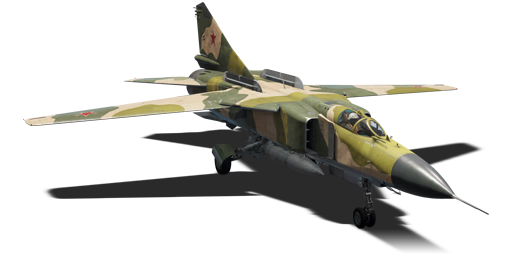


In the dawn of the 1980s, the refinements to the MiG-23 airframe in the MiG-23ML and MLA variants were deemed "still insufficient" and too difficult to use in combat against the latest 4th generation aircraft (as demonstrated in combat in the Middle East and Africa). As a result, until the (then) early MiG-29 could have its early production issues ironed out, an "ultimate" refinement of the MiG-23 was ordered, based on the upgrades applied to the ML and MLA variants previously and incorporating new technology from the then new MiG-29. The new plane had a complete overhaul to not only its avionics, but the airframe as well. The airframe was lightened even further over the ML "lightweight" variant, the wings were upgraded to the new strengthened "Type 4" wing with the "dogtooth" wing root for increased AoA at higher speeds, and were also given new slats and vortex generators to increase low speed performance. And to top off the flight performance upgrades, the powerful R-35F-300 engine providing extra thrust over older MiG-23 models was installed. The radar was replaced with the brand new N-008 (Sapphire-23MLA-II) radar, featuring electronic countermeasure resistance, vertical scan "dogfight" modes, Track-While-Scan capability, and far greater range over previous Sapphire-23 models. The avionics suite was completely overhauled with new smaller and lighter electronics, including new GCI and autopilot systems, multiple new new safety systems, and most importantly, the major upgrade from the previous SPO-10 RWR to the new SPO-15L "Breyoza" RWR system from the MiG-29. The reinforcement and lightening of the airframe resulted in the MiG-23MLD, when in the hands of experienced pilots in Maryi airbase (the Soviet equivalant to the American "Top Gun" aggressor training school) being able to beat even the new MiG-29 regularly in hit-and-run dogfights. Almost all MLDs were rebuilt from older ML and MLA aircraft, with the exception being the 62 export MLDs sold to Bulgaria (12) and Syria (50), being the last brand new single-seat MiG-23 airframes to roll off the production line.
The MiG-23MLD, introduced in Update "Ground Breaking", is the ultimate culmination of the Flogger family of aircraft. Building upon everything learned from the previous MiG-23 variants, this plane not only refines all of it to near perfection, but also introduces new gameplay elements that are required before advancing to the formidable MiG-29 that follows it in the tech tree. The lightened and strengthened airframe plus the increased engine power over its predecessor, the MiG-23M, will be instantly noticable as they provide a major advantage during manoeuvring, allowing the MLD to dogfight almost every 3rd generation fighter it faces, and some heavier 4th generation aircraft too. The aircraft is no slouch in relying on its weapons systems either, being outfitted with a generous amount of R-60M all aspect missiles in addition ot the potent R-24R/T missiles, a strong radar system, and a IRST targeting set. Manoeuvrability is exponentially increased over the previous MiG-23M with the replacement of the SPO-10 with a SPO-15L RWR from a MiG-29, and the addition of BDS-50-60 countermeasure dispensers increasing the amount of countermeasures you can take by six times. All in all, the MiG-23 is a very easy plane to learn and use, but a difficult one to master, as the player is forced to learn about enemy aircraft he faces, and decide accordingly for each engagement whether he needs to utilize the aircraft's great flight performance in a dogfight or employ its strong weapons systems in hit-and-run tactics, a very important note as the skill of picking your engagements and how to fight them is a important skill you will need for the succeeding aircraft in the tech tree, the venerable MiG-29.
flaps
flaps
flaps
brake
| Belt | Belt filling | Armor penetration (mm) at a distance: | |||||
|---|---|---|---|---|---|---|---|
| 10 m | 100 m | 500 m | 1000 m | 1500 m | 2000 m | ||
| HEFI-T/AP-I/HEF-I | 31 | 29 | 21 | 15 | 10 | 7 | |
| HEF-I/AP-I/AP-I/AP-I | 31 | 29 | 21 | 15 | 10 | 7 | |
| HEFI-T/HEF-I/HEFI-T/HEF-I/AP-I | 31 | 29 | 21 | 15 | 10 | 7 | |
| AP-I/HEF-I/HEF-I | 31 | 29 | 21 | 15 | 10 | 7 | |
| Name | Weight | Slot | ||||
|---|---|---|---|---|---|---|
| 90.6 kg |  |  |  |  | ||
| 44 kg |  |  | ||||
| 223 kg | 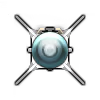 |  | ||||
| 215 kg | 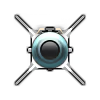 |  | ||||
| 244 kg | 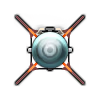 |  | ||||
| 237 kg | 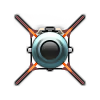 |  | ||||
| 4 × | 456 kg | 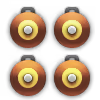 |  |  |  | |
| 227 kg |  |  |  |  | ||
| 508.3 kg |  |  | ||||
| 16 × | 110.2 kg |  |  |  |  | |
| 32 × | 225.5 kg | 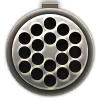 |  | |||
| 20 × | 376 kg |  |  | |||
| 235 kg | 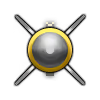 |  |  |  | ||
| 289 kg | 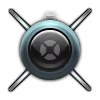 |  | ||||
| 94.3 kg | 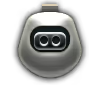 |  | ||||
| 2 × | 88 kg |  |  | |||
| 374 kg |  |  | ||||
| Drop tank (820 liters.) | 59.6 kg |  | ||||
| 12 × Large caliber countermeasures | 12 kg |  | ||||
| Delta-NG targeting pod | 20 kg |  | ||||












Flight performance |
|---|
Survivability |
|---|
Weaponry | ||||
|---|---|---|---|---|